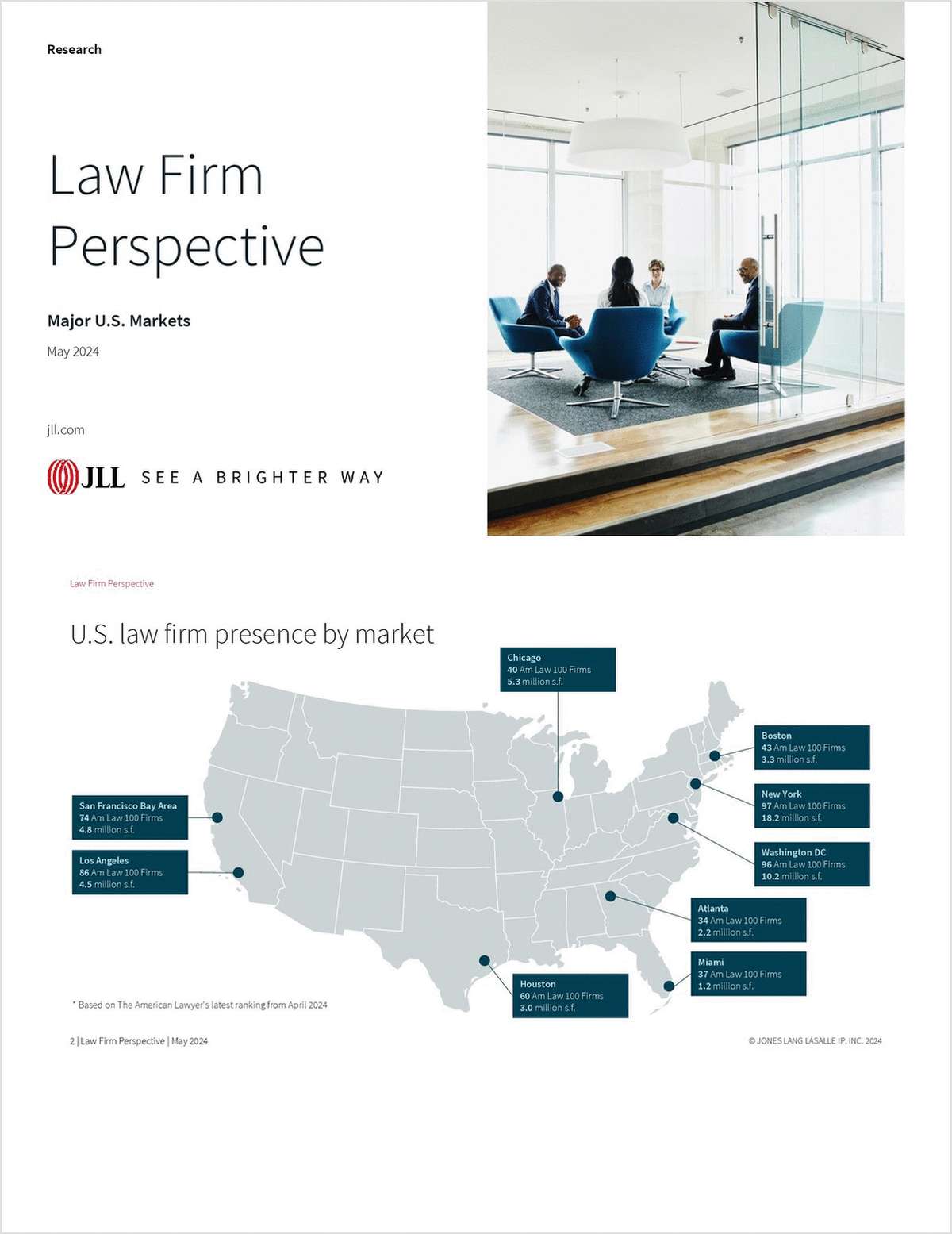 Bailey Bifoss, an associate with Fisher & Phillips, left, and Kimberly Seten, a partner with Constangy, Brooks, Smith & Prophete, right. Courtesy photos.
Bailey Bifoss, an associate with Fisher & Phillips, left, and Kimberly Seten, a partner with Constangy, Brooks, Smith & Prophete, right. Courtesy photos.As Women Move Into Leadership Roles, Gender Bias by Subordinates Grows
Employment lawyers say the issue is coming up more these days as more women take leadership roles.
June 13, 2019 at 05:12 PM
6 minute read
The original version of this story was published on Corporate Counsel
As more women assume supervisory and managerial roles, another manifestation of gender bias in the workplace is troubling some of them: bias by subordinates.
Management-side employment law firm Fisher & Phillips associate Bailey Bifoss, who recently wrote on the topic, said the issue comes up frequently these days in her Bay Area practice, as a growing number of women establish companies or take leadership roles in the technology industry there, although the problem isn't specific to the industry.
“There is frequently a conversation where they are running into overt or often more subtle gender bias as they are pitching their companies, or taking on the role of executives in these companies,” and when they are pitching to investors, Bifoss, a former plaintiffs lawyer, said in an interview. She wrote that bias from subordinates “can be just as undermining to an organization as managerial discrimination.”
Kimberly Seten, a managing partner at Constangy, Brooks, Smith & Prophete in its Kansas City, Missouri, office who advises employers on workplace policies and training, said, “Companies need to be careful that they are not just training managers and supervisors in dealing with subordinates, but to open up and widen the dialogue.”
Manifestations of gender bias by subordinates can be subtle, Bifoss wrote, citing several anecdotes: A female company founder and CEO, for example, said her senior male employees were able to deliver directives with authority, but the founder's own directives were often received by subordinates as merely “thoughts” or “feelings.” Questions of a technical nature were posed by job candidates to one female entrepreneur's husband rather than to her during job interviews. And women managers say they're more often forced into a caretaker role of “office mom” than their male counterparts, forced to plan social events and smooth ruffled feelings of subordinates.
Studies also show that women are more likely to be judged harshly for being direct and assertive in their speech than men, and more likely to be penalized for initiating discussions about compensation. “The empirical evidence supporting these stereotypes is overwhelming,” Bifoss said, citing several studies.
Seten agreed that the same behaviors by a male manager aren't looked at negatively. She added that she's not sure that bias by subordinates is happening more often, but that women are talking about it more often “because of the bigger dialogue [in the] aftermath of #MeToo movement.” Gender bias toward female managers can be exhibited even by employees of the same gender, employment lawyers said.
They said gender bias directed toward managers hasn't resulted in litigation as often as biased behavior by managers toward subordinates and colleagues, because to prevail on a claim there has to be a tangible impact on a person's employment, and that is less frequent when dealing with upward bias. But that doesn't mean there are no risks to the organization from it.
Bryan Schwartz, a plaintiffs litigator at Bryan Schwartz Law in Oakland, California, said, “you need an adverse action. But in California, and possibly some other states, failure to prevent discrimination is separately actionable. Failure to prevent someone from being treated disparately is a separate cause of action.”
“A circumstance I can imagine is a female manager getting a bad performance evaluation because subordinates are disrespecting her leadership, and failing to get productivity and she is being set up to fail,” he said. “Or where she is being chastised for failing to supervise or get along with her team. The supposed failure when it is arising from subordinates' gender bias.” But Schwartz said he hasn't litigated any cases where this type of bias was an issue.
Still, Bifoss pointed out, “female managers are also still employees who are subject to their company's anti-harassment and equal employment opportunity policies, and companies have an obligation to protect them from gender bias in the workplace. As California allows employees to sue for failure to prevent harassment or discrimination, failure to take steps necessary to protect employees from gender bias can result in huge costs for a company.” Anti-discrimination laws in California and some other states also apply when the managers and the employees are of the same gender or race or orientation, she said.
Employment lawyers said there are also costs to an organization aside from the litigation risk.
“One of the biggest risks in having a company culture that doesn't tackle issues of gender bias head-on is that those companies could lose some of their best talent,” Bifoss said. “Employee attrition is a huge cost. And obviously there is a risk that managers and subordinates aren't being as productive as they could be.
“The female managers who are experiencing gender bias are working harder to do the same tasks that male managers are because they are having to accomplish the task while overcoming gender bias. You see it in the efficiency of the team when the subordinates don't have the requisite degree of respect for their leader because of gender bias.”
General counsel and human resources departments can consider the following steps to deal with the problem, experts said. The first step is watching out for bias during the interview process, such as whether an applicant directs remarks only to a male interviewer. Also:
- Realize that company policies that usually prohibit insubordination also apply to disrespectful or hostile behavior toward managers regardless of cause.
- Leaders should keep stereotypes in mind when evaluating complaints about female supervisors and examine whether the perceptions are rooted in bias, such as complaints about a female manager's “pushy” tone.
- Avoid undermining the authority of female supervisors by “helping” them address problem employees.
- Use implicit bias training and policies and procedures rooted in respect for diversity and inclusion.
Seten said of bias by subordinates “even if it isn't always a legal risk it is still a bias a company should have on its radar and address as it does with all of its other implicit bias.” She added, “it may not legally be a violation of harassment and discrimination, but it still could be a violation of a company's policy against that type of conduct, and it is not a workplace culture that we want, to look at only one piece of implicit bias.”
This content has been archived. It is available through our partners, LexisNexis® and Bloomberg Law.
To view this content, please continue to their sites.
Not a Lexis Subscriber?
Subscribe Now
Not a Bloomberg Law Subscriber?
Subscribe Now
NOT FOR REPRINT
© 2024 ALM Global, LLC, All Rights Reserved. Request academic re-use from www.copyright.com. All other uses, submit a request to [email protected]. For more information visit Asset & Logo Licensing.
You Might Like
View All
Fatal Shooting of CEO Sets Off Scramble to Reassess Executive Security
5 minute read
2024 GC Pay Report: $20M Club Shrinks, but Not Average Compensation

Morrison Foerster, Gibson Dunn, DLA Piper, McGlinchey Bring on DC Lateral Partners
3 minute read
A 'True Visionary': Ira Millstein, Longtime Weil Partner and Corporate Governance 'Guru,' Dies at 97
6 minute readTrending Stories
- 1Insurer Not Required to Cover $29M Wrongful Death Judgment, Appeals Court Rules
- 2Slideshow: Jewish Bar Association of Georgia Marks 1st Year With Hanukkah Party
- 3Holland & Knight Launches Export Control Disputes and Advocacy Team
- 4Blake Lively's claims that movie co-star launched smear campaign gets support in publicist's suit
- 5Middle District of Pennsylvania's U.S. Attorney Announces Resignation
Who Got The Work
Michael G. Bongiorno, Andrew Scott Dulberg and Elizabeth E. Driscoll from Wilmer Cutler Pickering Hale and Dorr have stepped in to represent Symbotic Inc., an A.I.-enabled technology platform that focuses on increasing supply chain efficiency, and other defendants in a pending shareholder derivative lawsuit. The case, filed Oct. 2 in Massachusetts District Court by the Brown Law Firm on behalf of Stephen Austen, accuses certain officers and directors of misleading investors in regard to Symbotic's potential for margin growth by failing to disclose that the company was not equipped to timely deploy its systems or manage expenses through project delays. The case, assigned to U.S. District Judge Nathaniel M. Gorton, is 1:24-cv-12522, Austen v. Cohen et al.
Who Got The Work
Edmund Polubinski and Marie Killmond of Davis Polk & Wardwell have entered appearances for data platform software development company MongoDB and other defendants in a pending shareholder derivative lawsuit. The action, filed Oct. 7 in New York Southern District Court by the Brown Law Firm, accuses the company's directors and/or officers of falsely expressing confidence in the company’s restructuring of its sales incentive plan and downplaying the severity of decreases in its upfront commitments. The case is 1:24-cv-07594, Roy v. Ittycheria et al.
Who Got The Work
Amy O. Bruchs and Kurt F. Ellison of Michael Best & Friedrich have entered appearances for Epic Systems Corp. in a pending employment discrimination lawsuit. The suit was filed Sept. 7 in Wisconsin Western District Court by Levine Eisberner LLC and Siri & Glimstad on behalf of a project manager who claims that he was wrongfully terminated after applying for a religious exemption to the defendant's COVID-19 vaccine mandate. The case, assigned to U.S. Magistrate Judge Anita Marie Boor, is 3:24-cv-00630, Secker, Nathan v. Epic Systems Corporation.
Who Got The Work
David X. Sullivan, Thomas J. Finn and Gregory A. Hall from McCarter & English have entered appearances for Sunrun Installation Services in a pending civil rights lawsuit. The complaint was filed Sept. 4 in Connecticut District Court by attorney Robert M. Berke on behalf of former employee George Edward Steins, who was arrested and charged with employing an unregistered home improvement salesperson. The complaint alleges that had Sunrun informed the Connecticut Department of Consumer Protection that the plaintiff's employment had ended in 2017 and that he no longer held Sunrun's home improvement contractor license, he would not have been hit with charges, which were dismissed in May 2024. The case, assigned to U.S. District Judge Jeffrey A. Meyer, is 3:24-cv-01423, Steins v. Sunrun, Inc. et al.
Who Got The Work
Greenberg Traurig shareholder Joshua L. Raskin has entered an appearance for boohoo.com UK Ltd. in a pending patent infringement lawsuit. The suit, filed Sept. 3 in Texas Eastern District Court by Rozier Hardt McDonough on behalf of Alto Dynamics, asserts five patents related to an online shopping platform. The case, assigned to U.S. District Judge Rodney Gilstrap, is 2:24-cv-00719, Alto Dynamics, LLC v. boohoo.com UK Limited.
Featured Firms
Law Offices of Gary Martin Hays & Associates, P.C.
(470) 294-1674
Law Offices of Mark E. Salomone
(857) 444-6468
Smith & Hassler
(713) 739-1250










